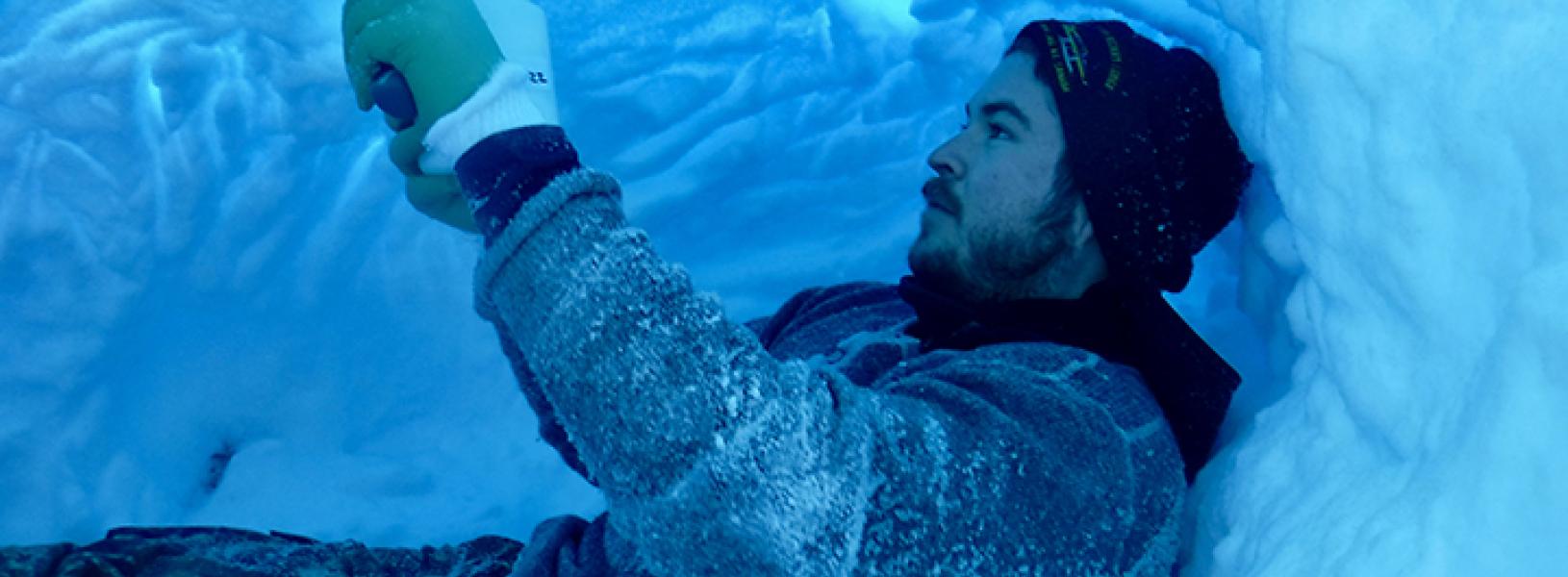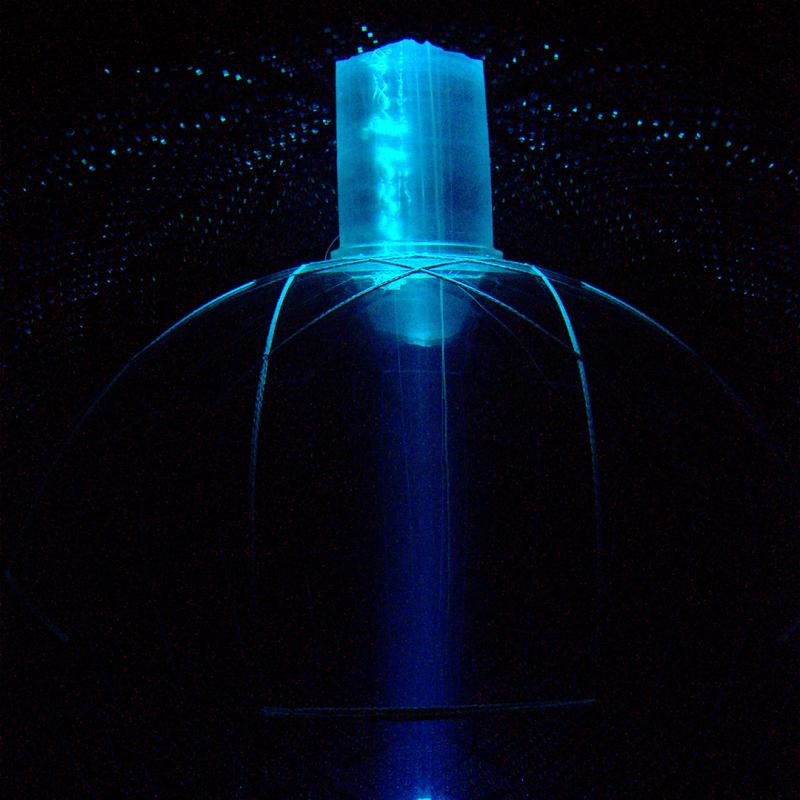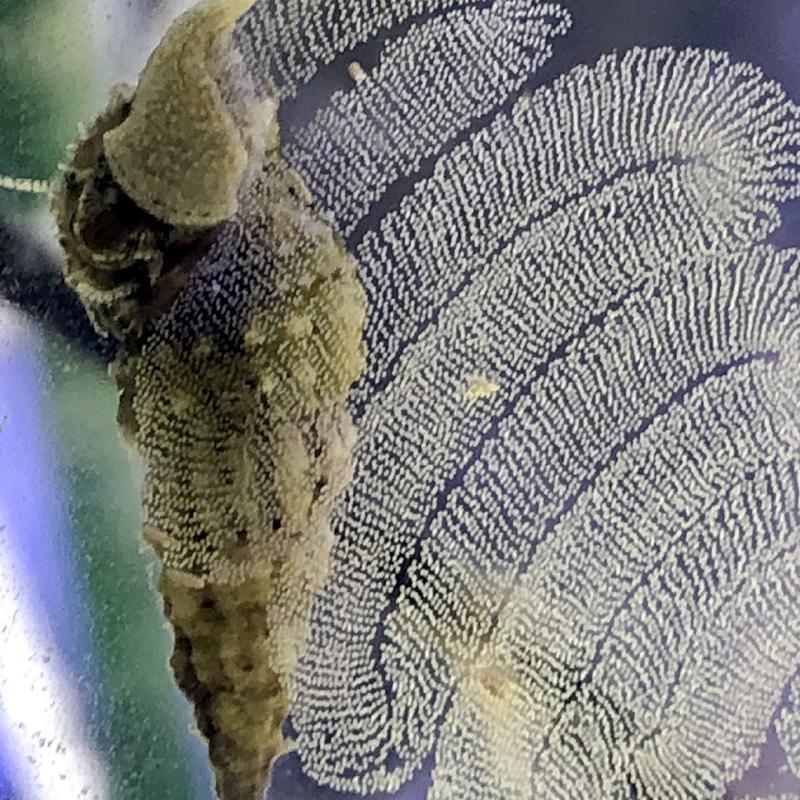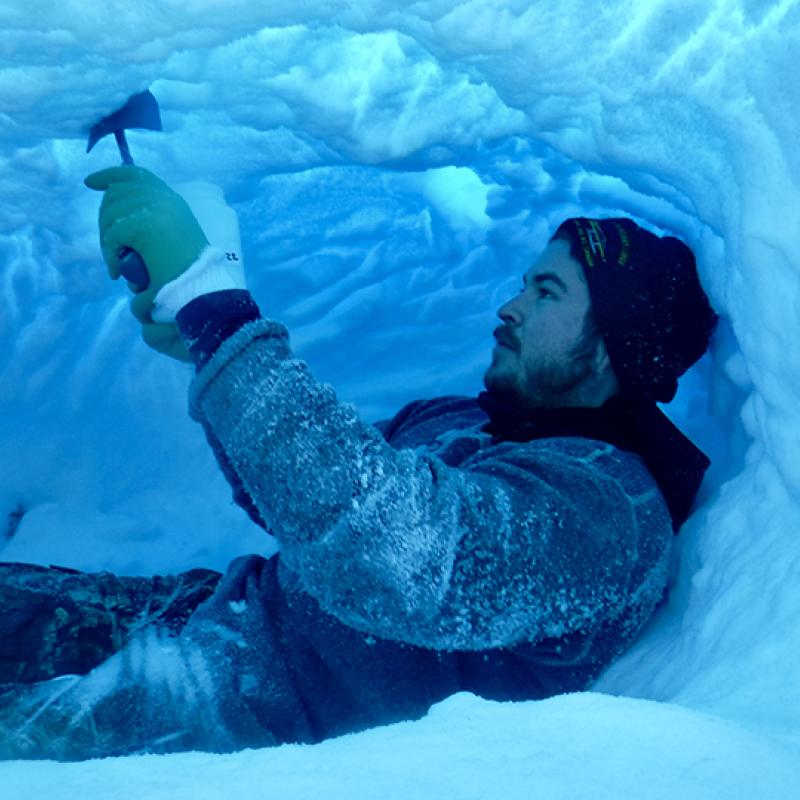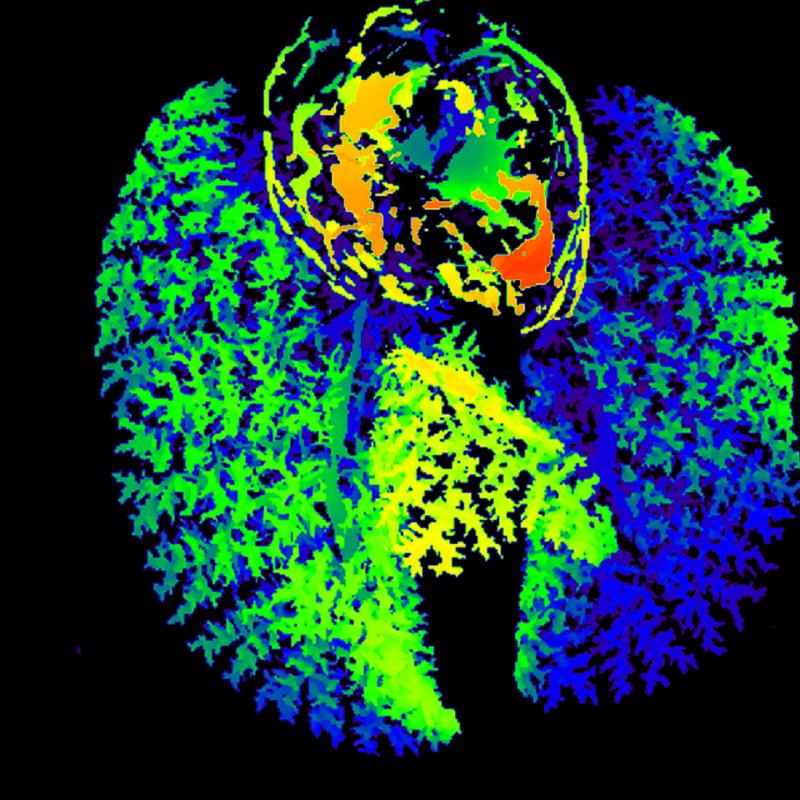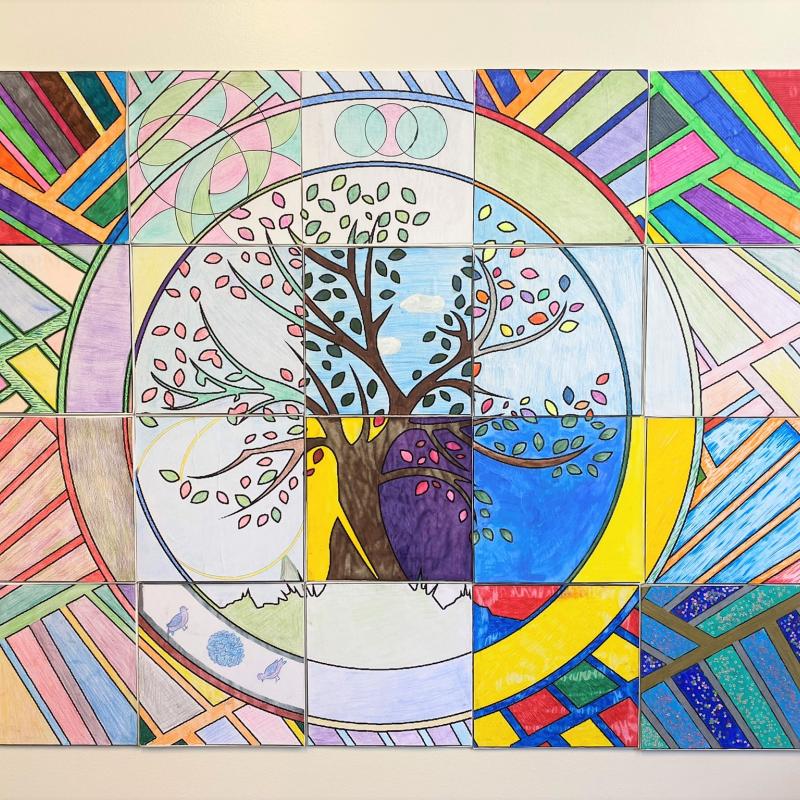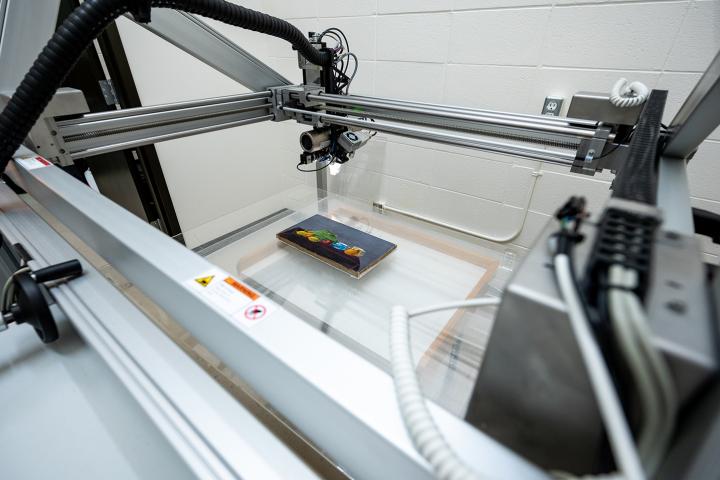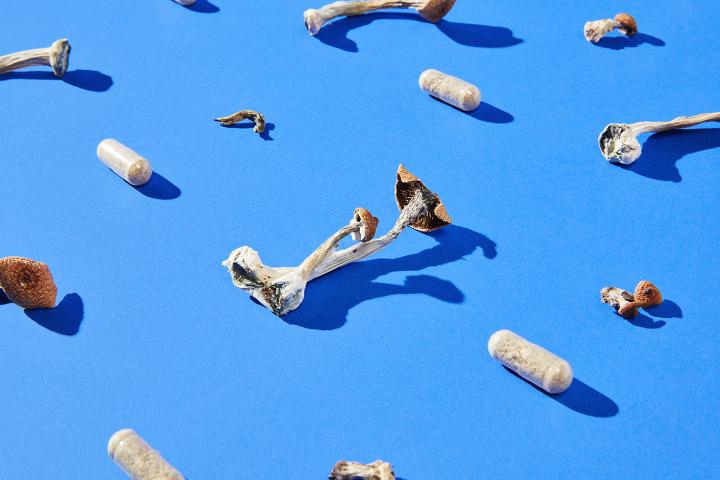For the past six years, the Art of Research photo contest has taken us behind the scenes, bringing to life the unseen beauty and rich diversity of research at Queen’s. Hundreds of images have been catalogued so far, each telling a unique story of a pivotal point in the research process. They also highlight how creativity and curiosity are common to both the research and artistic journeys. this year's contest showcases research advancing the United Nations’ Sustainable Development Goals.
Category
Innovation for Global Impact
Winner
Alex Wright
Location
SNOLAB, Sudbury, Ontario
The SNO+ experiment studies the fundamental properties of neutrinos. The detector consists of an active volume of 780 tonnes of liquid scintillator housed within a 12-metre-diameter acrylic vessel that is held in place by ropes and viewed by an array of about 10,000 photomultiplier light detectors. In this image, taken by a camera embedded in the photomultiplier array, the detector is illuminated only by light from the clean room at the top of the vessel neck, producing a beam effect.
Category
Climate Action
Winner
Ruqaiya Yousif
Location
Qatar
Here, a gastropod mummy lays down her egg cases. The research assesses the stable isotope, clumped isotope, and trace element compositions of living and quaternary shells from the Arabian/Persian Gulf. The aim is to link the shell chemistry with its surrounding environment and use this link to assess oceanographic changes over the past 125,000 years. When the picture was taken, researchers were growing gastropods under lab conditions and performing in vitro fertilization of oysters.
Category
Partnerships for Inclusivity
Winner
Scott Arlidge
Location
Coral Harbour, Nunavut
When a mother polar bear digs out of the den, skin cells from her paws are abraded and stuck to the snow. Here, snow is collected from inside a maternal polar bear den to collect environmental DNA. Some preliminary research shows that we may be able to identify individual bears by analyzing these snow samples, information that can inform polar bear population management. The research is a pilot of ground-based non-invasive polar bear monitoring techniques, with a focus on Inuit inclusivity. Inuit Elders and polar bear hunters are key knowledge holders and collaborators throughout this research.
Category
Creative and Sustainable Communities
Winner
Saskia de Wildt
Location
Gjoa Haven, Nunavut
The Inuit practise an ongoing relationship with the land through camping, hunting, and fishing. As part of the BearWatch project, researchers explore how such knowledge, accumulated over many generations, and Inuit values can be ethically engaged in a community-based polar bear monitoring program. This picture was taken on a trip out on the land around Gjoa Haven during spring 2022. It captures George Konana collecting ice from the lake for tea. He traces ice with the right quality to give his tea a nice ‘reddish, brown’ colour. At this exact moment, he cracks out a huge piece, enough for a month of tea.
Category
Good Health and Well-Being
Winner
Elahe Alizadeh, PhD
Location
Queen’s CardioPulmonary Unit (QCPU)
COVID-19's complications and mortality are associated with pneumonia and alterations in the pulmonary vasculature. Acquiring 3D images of vascular trees in animal models provide a useful tool to evaluate the effects of COVID-19 in humans. In the research, aimed at finding new drugs for COVID-19 under the supervision of Dr. Stephen Archer, vascular trees of a mouse were pressure perfused to maximal dilation with a radio-opaque material (barium). The heart and lungs were fixed and scanned using a VECTor4CT scanner. VECTor4CT is the first tri-modality imaging system equipped with an ultra-high-resolution micro-computed tomography scanner at Queen’s University.
Category
Partnerships for Inclusivity
Winner
Riley Malvern
Location
Kingston, Ontario
Oasis is a program co-developed by older adults to strengthen and sustain their communities to support aging in place. The Oasis Evaluation and Expansion research team has been working with Oasis communities since 2018 to expand the program across Canada and to evaluate a number of health and well-being outcomes. This photo depicts a mural that represents the power of communities coming together. Each square of this mural was designed by an Oasis member from communities across Kingston and Belleville. Together, the squares form the logo, which was designed by members of the original community.
View the full ‘art of research’ gallery.
